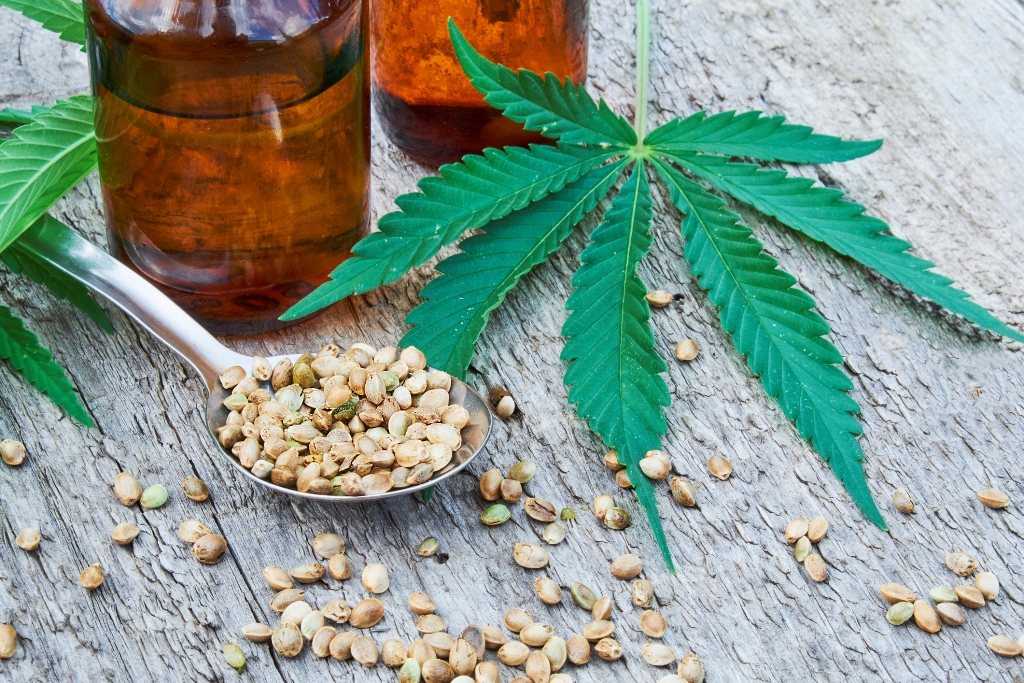
A Short(ish) History of CBD, Where it Came from and Where It’s Going
In recent years, the potential medicinal uses of cannabis have been a regular feature of news and opinion pieces. But why now? It’s not a new phenomenon. It has been used in pain management for thousands of years and was only banned in the 1930s.
Here’s a bit of history.
In Ancient Times
In fact, the first use of medicinal cannabis (that we’re aware of) dates all the way back to 2737BC and Chinese Emperor Sheng Nung, who used a tea infused with cannabis to help with pain caused by issues including malaria, rheumatism, and gout. What a combination!
Nor was Sheng the only old-school royalty to use CBD: the famously buttoned-up Queen Victoria did too, to help relieve pain from menstrual cramps. So the precedent has been there for hundreds, thousands of years – how did it end up so prohibited?
Put simply, CBD fell out of favor because as scientific discovery and medicine progressed, there wasn’t enough scientific evidence to recommend it. There still isn’t.
For more information, visit https://whatiscbdoil.health/
Early CBD Science
CBD, or cannabidiol to give it its full name, is one of two key compounds found in cannabis. Its fellow compound THC, or tetrahydrocannabinol, is the compound that creates the feeling of being ‘high’ in users. CBD, by comparison, is non-psychoactive.

In 1839, during the reign of Queen Victoria, Irish doctor and researcher William O’Shaughnessy was the first to publish his works on the potential therapeutic properties of CBD. This extremely controversial (at the time) finding focused primarily on the use of CBD as a potential anesthetic and creaked open a door that would remain ajar until some 100 years later.
Skip ahead to 1940. This was the year in which a British chemist by the name of Robert S.Cahn first discovered cannabinol, one of the key substances found in cannabis. This marked the first time cannabinoids had ever been identified. Just two years later, American chemist Roger Adams isolated cannabidiol, or CBD, for the first time. This watershed moment later led to the discovery of tetrahydrocannabinol or THC.
These early scientists, while pioneers, didn’t have a full understanding of cannabinoid compounds and could not identify which of the compounds they had discovered had what effect. Enter Raphael Mechoulam, one of the real forerunners of cannabinoid research.
In 1963, Mechoulam made his first significant breakthrough when he determined the stereochemistry (how the structure of a compound relates to its properties) of CBD. Not content with just one significant discovery, he followed this up with the stereochemistry of THC just one year later. This meant that the scientific community now understood that THC was the sole psychoactive compound of cannabis and that CBD had no mind-altering effects.
This went under-reported at the time due to the general stigma around cannabis use. It was more than ten years later that interest in the potential medicinal use of cannabinoids came back to the fore.
In the 1990s, this increased interest in the study of cannabis revealed two more significant breakthroughs – the discovery of additional cannabinoid compounds, and the groundbreaking discovery of the endocannabinoid system. This network of receptors found throughout the human body interacts directly, and exclusively, with cannabinoids. This discovery had a profound and lasting impact on interest in cannabis, most noticeably in the United States.
Legalization Begins
Just a few years later, in 1996, California became the first US state to legalize medicinal marijuana. Several other states followed, and by 2000, medicinal marijuana had also been legalized in Oregon, Washington, Alaska, Maine, Nevada, Colorado, and Hawaii. This legalization meant that more people had ready access to cannabis.
However, despite having been confirmed as non-psychoactive several decades earlier, CBD remained under the same classification as THC and was restricted under the same laws. This was largely due to the fact that while CBD was well-known in the scientific community, many of their discoveries had never been made known to the general public. In fact, during this time, more than two-thirds of Americans opposed the legalization of cannabis, even for medicinal use.
It’s hardly surprising that Americans held this belief, as there was still a significant stigma associated with cannabis use – the idea that it was a gateway drug, for example, or that it caused psychosis in teenagers. However, as more and more people began reporting positive results from pain management with cannabis, attitudes began to change.
CBD in the modern United States

The CBD market is now worth billions of dollars to the US economy, with products widely available online and in major retailers right across the country. Medicinal marijuana is now available in several US states, with a few also legalizing marijuana for recreational use.
CBD Products
There are several CBD and CBD-infused products available on the market. These can be found online, in health food stores, and in several major retailers.
As much more research into the effects of CBD is needed, any person who uses these products does so at their own risk. There is also no solid information about dosages available, so users must be careful to understand how much they are consuming and their personal tolerance.
CBD is available in several different formats, including oils, creams, tinctures, bath products, and body lotions. These products are usually applied topically or taken orally, either directly by mouth or added to food. The range of available products is growing exponentially, with new products added all the time.
The most potent CBD products available are generally CBD oils, as these are produced directly from the stalks, flowers, and seeds of the hemp plant itself. ‘Full spectrum’ CBD oils are the most potent and contain all of the compounds contained naturally in hemp. Users can ingest these oils directly from the dropper, by placing it under the tongue and waiting a few seconds before swallowing.
Tinctures are taken similarly, ingested via dropper directly into the mouth. However, for those people who are unused to, or not a fan of, CBD’s quite distinctive flavor, these tinctures are usually flavored with a carrier oil to dilute the earthy taste. Like all CBD products, there are no recommended dosages available for these products, so they should be used extremely carefully.
As well as these topical and oral options, CBD is also available in a range of edible products. These range from cookies, cakes, and other sweets to hot sauce, lemonade, and even pet food! As with other CBD products, the range increases daily, and these products are increasingly widely available.
CBD edibles are a slightly different proposition as unlike other products; they must be digested; this can take anywhere between half an hour and two hours. This means that the effects are felt more gradually, and anyone who consumes CBD this way needs to be extra careful about controlling their dose.
Pain management
CBD is currently used widely for the management of pain. It is not a treatment for underlying conditions that cause pain but is popular as an alternative, non-chemical way to relieve the symptoms caused by these conditions.
As well as pain caused by painful conditions, CBD is also popular as an aid for general aches and pains caused by simple everyday things such as exercise or playing sports. So how does it actually work?
CBD stops the body from absorbing a compound called anandamide, which is associated with the regulation of pain. It is believed that absorbing less anandamide, and therefore having a higher level in the bloodstream, reduces the amount of pain we feel.
It’s also thought that CBD works to reduce inflammation in the brain and nervous system generally, which may also benefit people who are experiencing pain.

One of the most interesting things about using CBD to manage pain is that humans don’t seem to build up any kind of tolerance to it – so you can keep taking the same dose for a long time and still see effects. As it is an alternative aid, it’s also unlikely to react or contradict any other pharmaceutical medications you may be taking to treat an underlying condition. As mentioned earlier, CBD does not treat the cause but can help you manage symptoms, so do not change your pharmaceutical regimen without first consulting your doctor.
Topical CBD products are very popular in the management of pain, with many people choosing to soak in a tub of CBD bath salts or apply a lotion or cream to the affected area. For more generalized pain conditions such as fibromyalgia, a CBD oil applied under the tongue may be more effective.
When considering a CBD regimen, please remember that it is not currently legal at the federal level and can only be used in certain states. Though it is now much more widely available due to increased legalization, you should still be careful to check the laws specific to your state before you purchase anything. You do not want to find yourself with any kind of legal consequences because you didn’t do your research!




